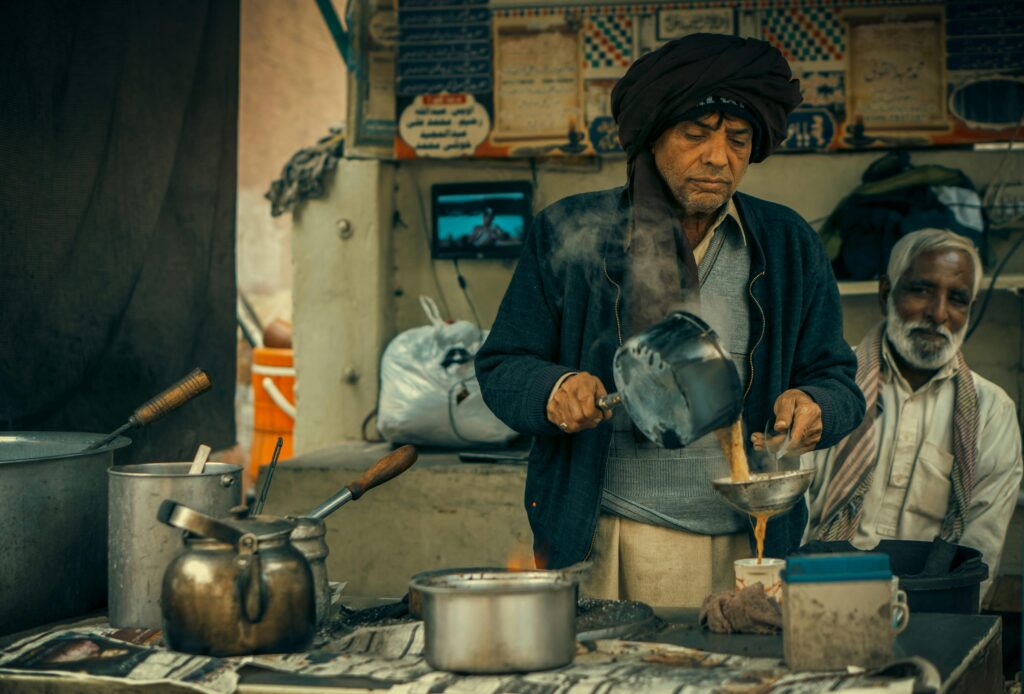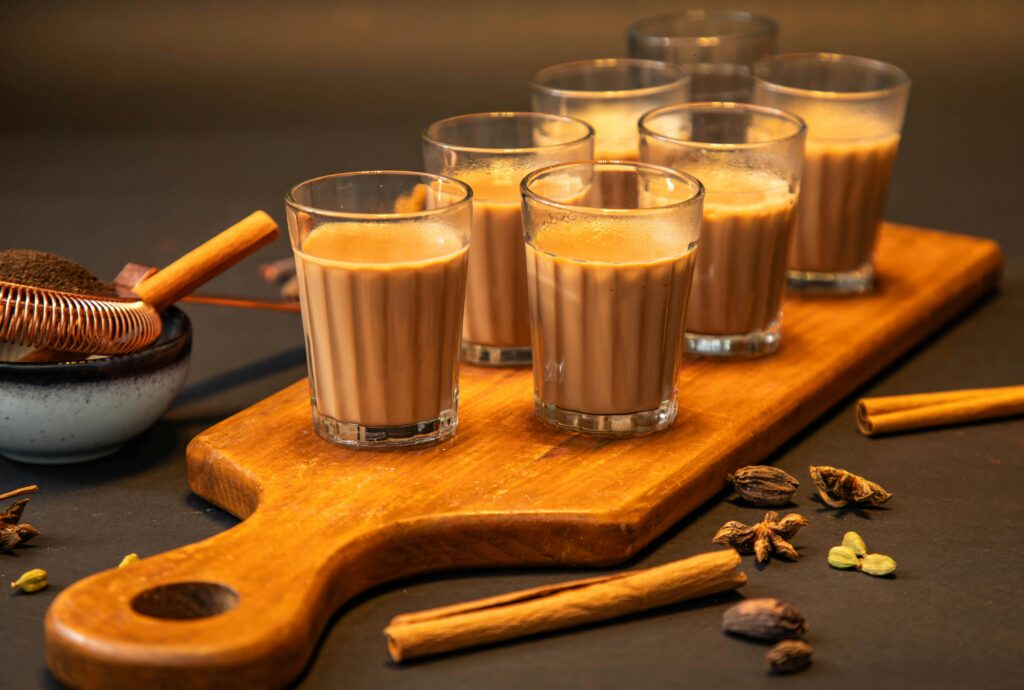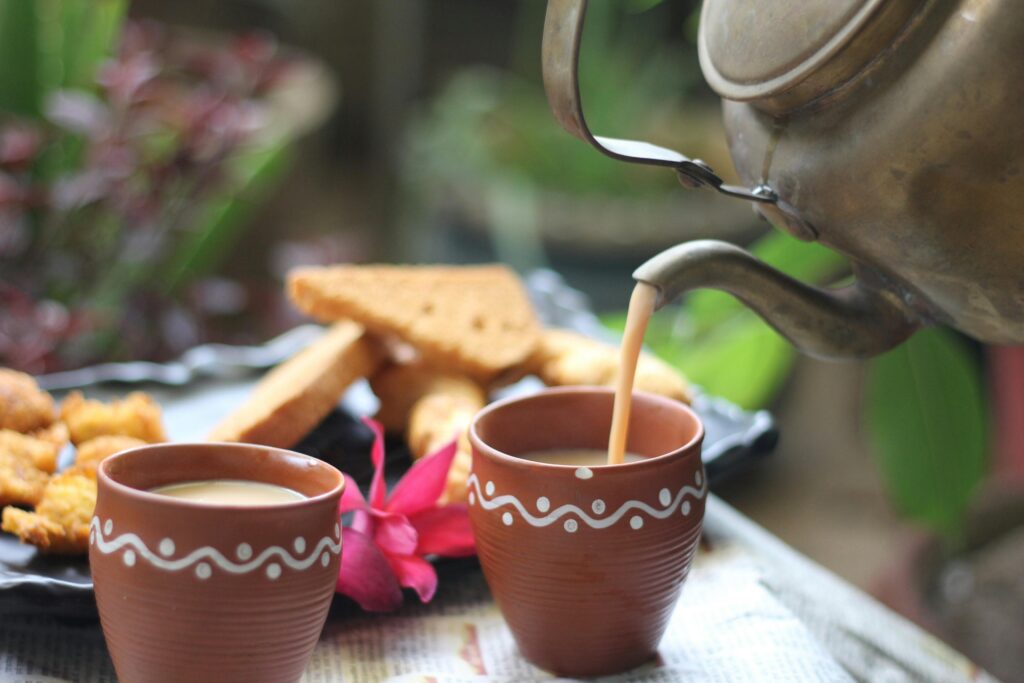If there’s one drink that defines Pakistan, it’s chai—the beloved Pakistani milk tea enjoyed at every home, street corner, and gathering. From the comforting doodh patti to the festive Kashmiri chai, tea is more than just a beverage; it’s a cultural experience. Across Pakistan, chai is a symbol of hospitality, warmth, and connection—a tradition passed down through generations.

History of Chai in Pakistan
Origins of Tea in South Asia
Tea first came to the Indian subcontinent through British colonization in the 19th century. Initially grown in Assam and Darjeeling, tea was marketed heavily as an everyday drink. Soon, it spread across South Asia, including the regions that later became Pakistan.
Evolution of Chai in Pakistani Homes
Unlike the British style of tea with milk on the side, Pakistanis embraced a boiled tea method, combining tea leaves, milk, and sugar together. This gave rise to doodh patti, a rich and creamy version that remains the most popular chai in Pakistan.
British Influence and Local Adaptation
The British introduced tea, but Pakistanis made it their own by infusing local flavors and spices like cardamom, cinnamon, and cloves—turning chai into a uniquely Pakistani beverage.
Chai in Pakistani Culture
Chai as a Symbol of Hospitality
Serving chai is the first gesture of welcome in Pakistani homes. Guests are always offered tea, often with biscuits, samosas, or traditional sweets. Refusing chai is almost considered impolite.
Street Chai Culture in Pakistan
In every city, from Karachi to Lahore to Islamabad, street vendors known as chai walas serve steaming cups of karak chai in small glasses. These tea stalls are not just about tea—they’re gathering spots where people discuss politics, cricket, and everyday life.
Chai at Pakistani Weddings and Gatherings
No wedding or celebration is complete without chai. From late-night wedding receptions to family get-togethers, chai is the heartbeat of social interaction in Pakistan.
Popular Types of Pakistani Chai
Doodh Patti (Milk-Only Tea)
The most common form of Pakistani tea—made by boiling tea leaves directly in milk, with sugar for sweetness. Creamy, comforting, and found everywhere.
Kashmiri Chai (Pink Tea)
A festive tea made with green tea leaves, baking soda, milk, and nuts like pistachios and almonds. Known for its pink color and rich taste, it’s often served at weddings.
Masala Chai (Spiced Tea)
Infused with spices like cardamom, cloves, cinnamon, and black pepper. Popular during winters for its warming properties.
Karak Chai (Strong & Bold Tea)
Popular in Pakistan’s northern regions and Gulf countries, this chai is boiled longer for a bold, thick, and strong flavor.
Sabz Chai (Green Tea)
Known as Qehwa, this green tea is flavored with cardamom and sometimes saffron. Common in Khyber Pakhtunkhwa and Gilgit-Baltistan.
Traditional Pakistani Chai Recipes
Classic Doodh Patti Recipe
Ingredients:
- 1 cup milk
- 1 tsp black tea leaves
- Sugar to taste
Method:
- Boil milk in a pan.
- Add tea leaves and simmer for 3–5 minutes.
- Strain and serve hot.
Kashmiri Chai Recipe
Ingredients:
- 2 cups water
- 2 tsp Kashmiri green tea leaves
- Pinch of baking soda
- 2 cups milk
- Crushed almonds, pistachios
- Sugar to taste
Method:
- Boil tea leaves with water and baking soda until reddish-brown.
- Add milk and simmer.
- Garnish with nuts before serving.
Masala Chai Recipe
Ingredients:
- 1 cup water
- 1 cup milk
- 1 tsp black tea leaves
- 2 cardamom pods
- 1 cinnamon stick
- Sugar to taste
Method:
- Boil water with spices.
- Add tea leaves and simmer.
- Add milk and sugar, boil again, and serve.
Health Benefits of Pakistani Chai Tea
Role of Spices in Wellness
Pakistani chai often includes spices rich in antioxidants. Cardamom supports digestion, cinnamon balances blood sugar, and ginger boosts immunity.
Chai vs. Coffee: Which is Better?
While coffee provides a stronger caffeine kick, chai offers smoother energy with calming effects, thanks to L-theanine in tea leaves and soothing spices.
Modern Twist: Chai Cafés and Global Popularity
In recent years, Pakistan has seen a rise in chai cafés, blending tradition with modern café culture. Internationally, drinks like Pakistani karak chai and masala chai lattes are becoming trendy in the West, introducing the world to Pakistan’s tea heritage.
FAQs About Pakistani Chai Tea
Q1: What is the difference between Pakistani chai and Indian chai?
Pakistani chai tends to use more milk and is creamier, while Indian chai often emphasizes stronger spice blends.
Q2: Is Pakistani chai always made with milk?
Most types are milk-based, but green tea (sabz chai) is also popular.
Q3: Does Kashmiri chai naturally turn pink?
Yes, the combination of green tea, baking soda, and milk creates its unique pink color.
Q4: Is chai healthy?
In moderation, yes. The tea and spices provide antioxidants, though high sugar content should be avoided.
Q5: Why is doodh patti so popular in Pakistan?
Because of its simplicity, creamy taste, and comforting feel—it’s an everyday ritual for millions.
Conclusion: A Cup of Heritage and Comfort
Pakistani chai tea is more than just a drink—it’s history, culture, and tradition in a cup. From the rich doodh patti to the festive Kashmiri chai, each variation tells a story of hospitality, warmth, and community.
Whether sipped at a roadside stall or served in a wedding hall, chai remains an integral part of Pakistani identity. And as its popularity spreads worldwide, every sip of Pakistani chai continues to bring people together.
For further reading on traditional teas, visit the Tea Association of the USA or explore South Asian tea history.

read more:
- tea for beginners
- pakistani vs indian chai
- types of chai
- chai in literature
- chai in subcontinent
- Karak or Masala Chai: Which One’s better?
- masala chai
- From Clay Pot to Cup – The Story of Pakistan’s Matka Chai
- Pakistani Tea Guide: Doodh Patti vs Chai
- Make Perfect Pakistani Chai – A Recipe Loved for Generations
